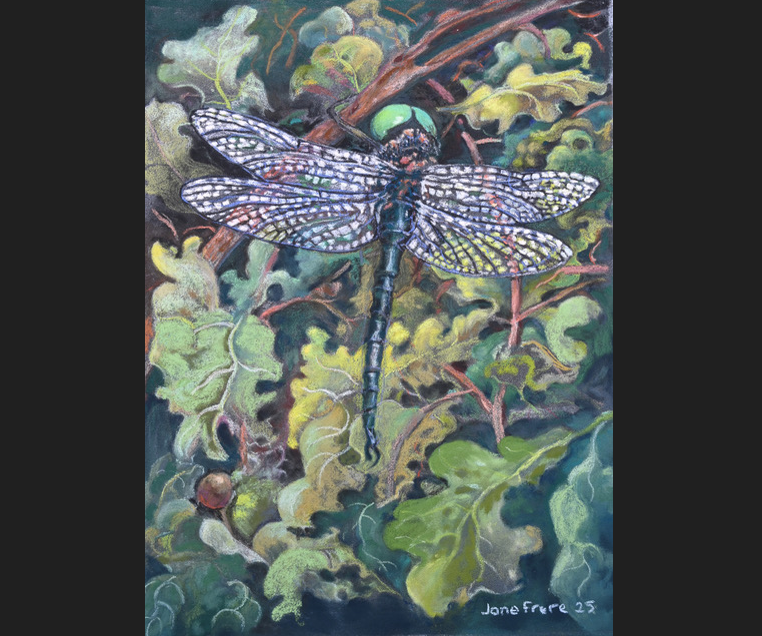
Jeremy LeggettThe Northern Emerald Dragonfly
As its name suggests The Northern Emerald possesses the quality of an exquisite jewel. Artists and craftsmen down the ages have used it as a motif especially favoured by the Art Nouveau movement. One only needs to think of the enchanting jewellery design of René Lalique. He was clearly mesmerised by the male!s fluorescent green globes for eyes on its pencil like metallic dark green abdomen pinched at the waist. The female differs slightly, her thicker abdomen adorned with paired yellow markings. It is the symmetry and iridescent quality of the dragonfly’s wings that inspires so many. Wings composed of a transparent membrane supported by a complex network of veins that give them both strength and flexibility allowing its remarkable manoeuvrability in flight. Overjoyed that the Northern Emerald Dragonfly, mostly found in North West Scotland, can be found in close proximity to my house above Loch Ness. It feels like a good omen, an indication that the conservation work we are doing at Highlands Rewilding is moving in the right direction. Certainly the land that we are restoring offers a suitable range of mosaic habitat combining acidic bogs, peaty moorlands, wet heaths and ample tree cover which they use for shelter and perching sites. Avoiding open spaces, as skilled hunters they dart between wooded areas seeking their prey, from small insects including the notorious midge. The trees regulate the temperature of water bodies where they breed, all beneficial for their larvae. The female lays her eggs in still areas under water logged sphagnum moss, sundew and tussock clumps. Once hatched, the larvae lives for at least two years among detritus in the water beneath floating sphagnum where they shed their skins several times as they grow. The nymphs are voracious predators and feed on aquatic insects, small fish and tadpoles. In turn both larvae and adults provides a tasty morsel for a number of birds, predatory beetles, frogs and toads when caught by surprise and spiders if they get too close to the web. Although designated ‘least concern’ on the IUCN Red list the Northern Emerald warrants ‘near threatened’ status in the U.K.. But we must keep in mind the major threat to all Scottish invertebrates include agrochemicals, peat extraction, drainage of wetlands, afforestation and of course climate change. However we now find ourselves facing new challenges, to protect biodiversity against off the scale demands for inappropriate infrastructure projects” that threaten to encroach on what is left of Scotland!s wild areas decimating sensitive ecosystems.
Biodiversity is collapsing, the climate and is in meltdown, most of life on earth is ultimately threatened as a consequence, and as the founder of Highlands Rewilding, I long to do something meaningful about it.

